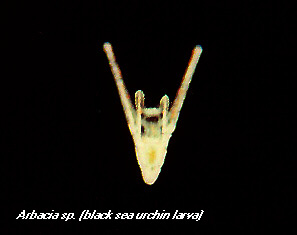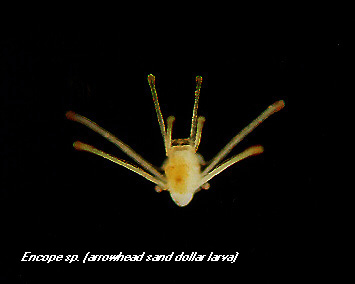

| MadSci Network: General Biology |
Hi Matt:
Sand dollars belong to the class Echinodea, which also includes sea urchins. They are Echinoderms, which also includes starfish (Asteroidea), sea cucumbers (Holothuroidea), brittle stars (Ophiuroidea), and sea lilies (Crinoidea). All members of the Echinodermata possess pentameral radial symmetry, which means that they are symmetrical in five parts along one axis (like a five-spoked wheel)- next time you see a starfish or a sand dollar, check it out!
It turns out that the young stages of all Echinoderms are pretty similar. The adults release gametes (sperm & eggs) directly into the water. Echinoderms are often gregarious and they appear to have some sort of chemical signalling that ensures that release is synchronous within a given area. One egg and one sperm produces an embryo, which develops into a larva. The larvae are planktonic, and develop through several stages before settling down to the bottom to develop into adults.
I've included a couple of pictures of Echinoid larvae below:


If you're interested in learning more about sand dollars and Echinoderms in general, I'd suggest checking out:
Hope that helps!
Rob Campbell, MAD Scientist
Try the links in the MadSci Library for more information on General Biology.